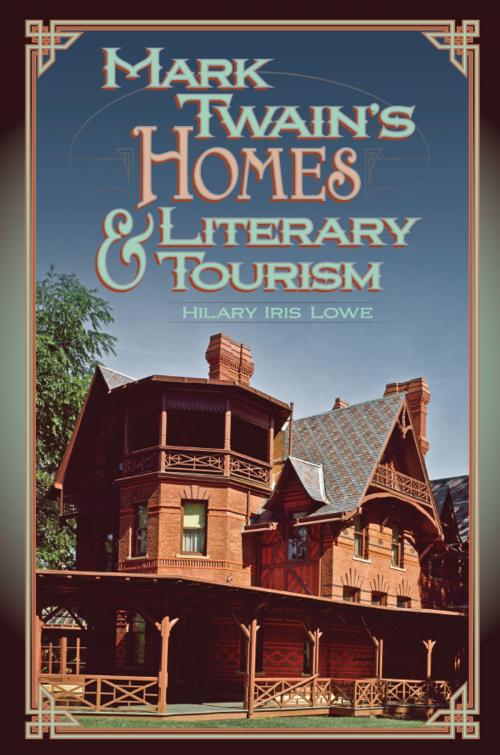Mark Twain's Homes and Literary Tourism
Fiction & Literature, Literary Theory & Criticism, American, Nonfiction, Travel, Adventure & Literary Travel| Author: | Hilary Iris Lowe | ISBN: | 9780826272782 |
| Publisher: | University of Missouri Press | Publication: | July 20, 2012 |
| Imprint: | University of Missouri | Language: | English |
| Author: | Hilary Iris Lowe |
| ISBN: | 9780826272782 |
| Publisher: | University of Missouri Press |
| Publication: | July 20, 2012 |
| Imprint: | University of Missouri |
| Language: | English |
A century after Samuel Clemens’s death, Mark Twain thrives—his recently released autobiography topped bestseller lists. One way fans still celebrate the first true American writer and his work is by visiting any number of Mark Twain destinations. They believe they can learn something unique by visiting the places where he lived. Mark Twain’s Homes and Literary Tourism untangles the complicated ways that Clemens’s houses, now museums, have come to tell the stories that they do about Twain and, in the process, reminds us that the sites themselves are the products of multiple agendas and, in some cases, unpleasant histories.
Hilary Iris Lowe leads us through four Twain homes, beginning at the beginning—Florida, Missouri, where Clemens was born. Today the site is simply a concrete pedestal missing its bust, a plaque, and an otherwise-empty field. Though the original cabin where he was born likely no longer exists, Lowe treats us to an overview of the history of the area and the state park challenged with somehow marking this site. Next, we travel with Lowe to Hannibal, Missouri, Clemens’s childhood home, which he saw become a tourist destination in his own lifetime. Today mannequins remind visitors of the man that the boy who lived there became and the literature that grew out of his experiences in the house and little town on the Mississippi.
Hartford, Connecticut, boasts one of Clemens’s only surviving adulthood homes, the house where he spent his most productive years. Lowe describes the house’s construction, its sale when the high cost of living led the family to seek residence abroad, and its transformation into the museum. Lastly, we travel to Elmira, New York, where Clemens spent many summers with his family at Quarry Farm. His study is the only room at this destination open to the public, and yet, tourists follow in the footsteps of literary pilgrim Rudyard Kipling to see this small space.
Literary historic sites pin their authority on the promise of exclusive insight into authors and texts through firsthand experience. As tempting as it is to accept the authenticity of Clemens’s homes, Mark Twain’s Homes and Literary Tourism argues that house museums are not reliable critical texts but are instead carefully constructed spaces designed to satisfy visitors. This volume shows us how these houses’ portrayals of Clemens change frequently to accommodate and shape our own expectations of the author and his work.
A century after Samuel Clemens’s death, Mark Twain thrives—his recently released autobiography topped bestseller lists. One way fans still celebrate the first true American writer and his work is by visiting any number of Mark Twain destinations. They believe they can learn something unique by visiting the places where he lived. Mark Twain’s Homes and Literary Tourism untangles the complicated ways that Clemens’s houses, now museums, have come to tell the stories that they do about Twain and, in the process, reminds us that the sites themselves are the products of multiple agendas and, in some cases, unpleasant histories.
Hilary Iris Lowe leads us through four Twain homes, beginning at the beginning—Florida, Missouri, where Clemens was born. Today the site is simply a concrete pedestal missing its bust, a plaque, and an otherwise-empty field. Though the original cabin where he was born likely no longer exists, Lowe treats us to an overview of the history of the area and the state park challenged with somehow marking this site. Next, we travel with Lowe to Hannibal, Missouri, Clemens’s childhood home, which he saw become a tourist destination in his own lifetime. Today mannequins remind visitors of the man that the boy who lived there became and the literature that grew out of his experiences in the house and little town on the Mississippi.
Hartford, Connecticut, boasts one of Clemens’s only surviving adulthood homes, the house where he spent his most productive years. Lowe describes the house’s construction, its sale when the high cost of living led the family to seek residence abroad, and its transformation into the museum. Lastly, we travel to Elmira, New York, where Clemens spent many summers with his family at Quarry Farm. His study is the only room at this destination open to the public, and yet, tourists follow in the footsteps of literary pilgrim Rudyard Kipling to see this small space.
Literary historic sites pin their authority on the promise of exclusive insight into authors and texts through firsthand experience. As tempting as it is to accept the authenticity of Clemens’s homes, Mark Twain’s Homes and Literary Tourism argues that house museums are not reliable critical texts but are instead carefully constructed spaces designed to satisfy visitors. This volume shows us how these houses’ portrayals of Clemens change frequently to accommodate and shape our own expectations of the author and his work.















